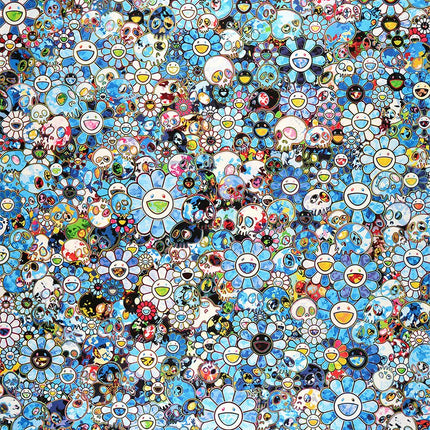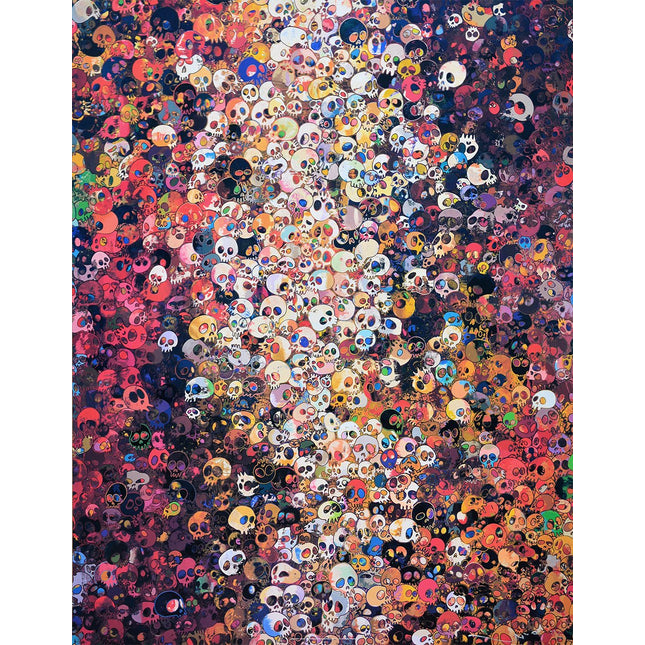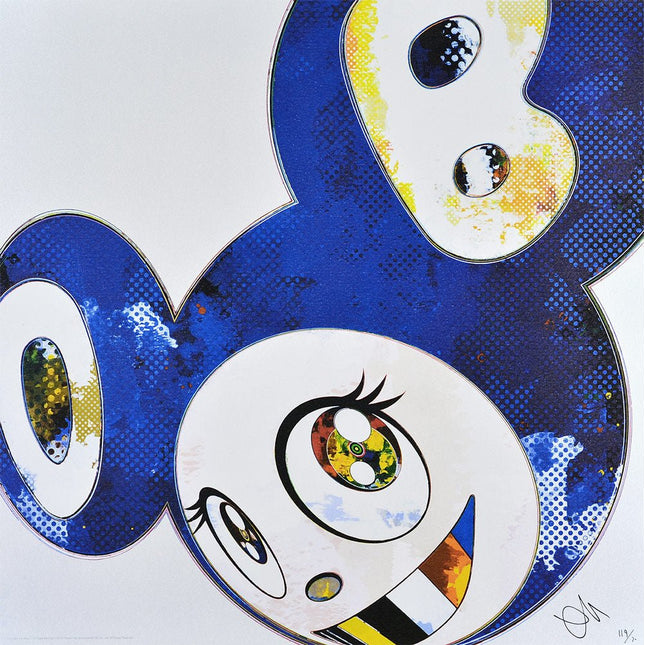Offset lithograph with silver on paper. This work belongs to a limited edition of 300 and is hand signed and numbered by Takashi Murakami on the lower right corner. Published by Kaikai Kiki Co., Japan.
Because Takashi Murakami's Skulls series and its counterpart, Flowers, achieved great success, the Japanese artist decided to create a self-referential fusion that parodies his own work while pushing his exploration of dualities even further. The result was the Flowers & Skulls series, to which Signal belongs—a body of work where Murakami intertwines the ephemeral beauty of his smiling flowers with the symbolic weight of skulls, long associated with mortality and the passage of time. These compositions evoke both the all-over patterns of American Abstract Expressionism and the long-standing tradition of vanitas still lifes, where floral abundance and skeletal remains coexist as a meditation on life’s fleeting nature.
In Signal, Murakami presents a strikingly immersive composition dominated by his iconic flowers, blooming in a hypnotic sea of rich blue tones. This limited-edition artwork, meticulously hand-signed and numbered by the artist, captures the essence of his Superflat philosophy, where chromatic intensity and meticulous repetition create a visual language that is simultaneously playful and profound. Here, Murakami’s flowers are not merely decorative elements but potent symbols of cultural memory, mass production, and the relentless cycle of creation and decay. The addition of skulls within this composition reinforces his ongoing engagement with life’s transience, merging themes of joy and impermanence in a way that is both accessible and conceptually layered.
Blue, a recurring motif in Murakami’s oeuvre, takes center stage in Signal, infusing the piece with a sense of serenity, depth, and boundless expanse. This choice of color connects to the artist’s fascination with Yves Klein, whose radical use of blue as a symbol of the infinite and the metaphysical has profoundly influenced contemporary art. Like Klein, Murakami employs color not merely as an aesthetic tool but as a conduit for emotion and meaning, using saturation and repetition to draw the viewer into an almost transcendental experience. Signal thus aligns with other key works in which he explores the power of blue, such as his monochromatic Flowers series and other pieces where he revisits this hue with a distinctly contemporary sensibility.
The interplay of flowers and skulls within Signal extends Murakami’s longstanding interrogation of contrasts—between superficial exuberance and existential depth, between consumer culture and artistic tradition, between the fleeting and the eternal. The composition’s rhythmic repetition suggests a sense of movement and expansion, reinforcing the idea of art as an infinite continuum of reinvention. Through this mesmerizing arrangement, Signal becomes more than just an artwork—it is an invitation to immerse oneself in a universe where pop art, abstraction, and profound philosophical inquiry merge in a seamless and timeless dialogue.













